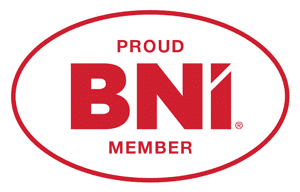“Form Follows Function” Wolff’s Law & The NST Approach for Treating Pathologies
By: Alexandra Nikolov, LMT, CNS
One of the foundational principles of Neurosomatic Therapy (NST) states that “form follows function, and function follows form.” Developed by 19th century German physician, Julius Wolff, Wolff’s Law serves as the backbone to our method for treating pathologies. In other words, the shortening or lengthening of a muscle, the function, directly affects the shape of our posture and position of our skeletal system, the form. Conversely, how our anatomy functions biomechanically and physiologically is affected by the posture and shape of our bones.
 I like to use the analogy of a car:
I like to use the analogy of a car:
When the axels and wheels of a car are aligned, the car functions with ease. The ride feels smooth, the wheels are balanced and this allows for the tread to wear down evenly from side to side. The system has an integrated structure to generate a fluid rotation from the drive shaft moving out to the axels and wheels. Now imagine your wheel toes inward on the front passenger side after hitting a curb one day.
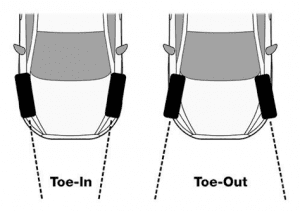 Your car is still driveable, but the wheels do not rotate as smoothly or easily than before the accident. The tire’s position also applies more pressure against the CV joints. Your car has to work harder to maintain the centerline. The car will accommodate these new changes, but at what cost? Compensations will occur somewhere along the chain. In this misaligned position the car changes how it transfers rotational force throughout the whole system. Over time parts will wear down faster, and the vehicle’s efficiency to produce movement and use energy will decline.
Your car is still driveable, but the wheels do not rotate as smoothly or easily than before the accident. The tire’s position also applies more pressure against the CV joints. Your car has to work harder to maintain the centerline. The car will accommodate these new changes, but at what cost? Compensations will occur somewhere along the chain. In this misaligned position the car changes how it transfers rotational force throughout the whole system. Over time parts will wear down faster, and the vehicle’s efficiency to produce movement and use energy will decline.
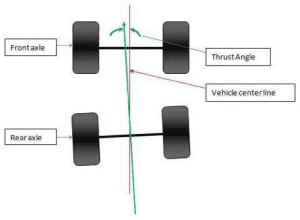
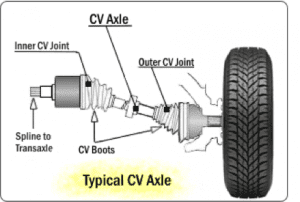 The same concepts apply to human anatomy. Our body is an intricate machine with parts working together to produce an action. Muscles, bones, joints, articular surfaces, and other connective tissues comprise our Machine. An aligned structure will resist the forces of gravity with more ease, and produce force and movement with efficiency.
The same concepts apply to human anatomy. Our body is an intricate machine with parts working together to produce an action. Muscles, bones, joints, articular surfaces, and other connective tissues comprise our Machine. An aligned structure will resist the forces of gravity with more ease, and produce force and movement with efficiency.
 A posturally distorted structure, meaning one that moves away from neutral, has to work harder to remain upright. If the ankle joint becomes pronated, that will cause compensational shifts at the knee, hip and continue upward into the head. In &feature=share&fbclid=IwAR2taJd84kWrfG5Ok16joYZs0qLcGdGhkm-iYlQ-Sltxvrc7D12VUWjyqio”>this video Randy Clark explains these concepts in detail.
A posturally distorted structure, meaning one that moves away from neutral, has to work harder to remain upright. If the ankle joint becomes pronated, that will cause compensational shifts at the knee, hip and continue upward into the head. In &feature=share&fbclid=IwAR2taJd84kWrfG5Ok16joYZs0qLcGdGhkm-iYlQ-Sltxvrc7D12VUWjyqio”>this video Randy Clark explains these concepts in detail.
Ankle stability will decline due to the ligaments on the inner (left) side overstretching. Pronation also encourages the foot’s arch to collapse, which is the foundation for absorbing and transferring kinetic energy into the body. Look at image on the right. Your Achilles tendon attaches where the yellow line begins and moves upward to merge into the calf muscles. The pronated ankle will be less efficient at generating force and transferring movement from your foot into the calf and legs. More work = less efficiency + more compensation!

 Lastly, muscles attaching to the knee and hip will have a new length-tension relationship to reflect the new positions. When tension is released in one part of the body, like slack at the ankle joint, the body will create tension elsewhere to provide support for the remaining structure. This is known as tensegrity, or “tension + integrity” (more on that in another blog). All this just to accommodate the structural change occurring at the ankle! Wow!
Lastly, muscles attaching to the knee and hip will have a new length-tension relationship to reflect the new positions. When tension is released in one part of the body, like slack at the ankle joint, the body will create tension elsewhere to provide support for the remaining structure. This is known as tensegrity, or “tension + integrity” (more on that in another blog). All this just to accommodate the structural change occurring at the ankle! Wow!
Our bodies will degenerate over time, that is no question, but our structure is designed to work in a specific manner. A posturally aligned structure will degenerate more slowly than a body whose posture deviates from the centerline (neutral posture).
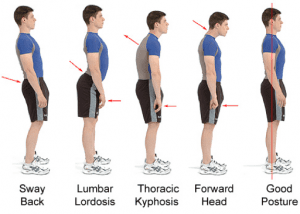 NST’s high efficacy to provide long-term pain relief centers around the concepts in Wolff’s Law. That is why our postural assessment is so important! It is how we are able to identify which tissues are at the ROOT cause to a patient’s pain rather than chase their symptoms. A Certified Neurosomatic Specialist (CNS) has studied the muscular attachments of every muscle in the body and knows the postural distortions they will create when in spasm. A postural assessment is the tool that allows your CNS to have success in resolving pain and pathology where other structural therapists do not.
NST’s high efficacy to provide long-term pain relief centers around the concepts in Wolff’s Law. That is why our postural assessment is so important! It is how we are able to identify which tissues are at the ROOT cause to a patient’s pain rather than chase their symptoms. A Certified Neurosomatic Specialist (CNS) has studied the muscular attachments of every muscle in the body and knows the postural distortions they will create when in spasm. A postural assessment is the tool that allows your CNS to have success in resolving pain and pathology where other structural therapists do not.
Until next time, health enthusiasts!
To learn more about your posture or why you may be experiencing pain, schedule a free consultation with one of our experienced therapists.
References:
- Types of Wheel Alignment and Procedures. REPCO Authorised Service. https://www.repcoservice.com/wheel-alignment-types. Accessed April 16, 2020.
- What is the purpose of a CV joint in the axel of a car. Quora. https://www.quora.com/What-is-the-pupose-of-a-CV-joint-in-the-axle-of-a-car. Accessed April 16, 2020.
- Alignment Terms Explained. Santa Fe Garage. https://www.santafegarage.com/precision-alignments/alignment-terms-explained/. Accessed April 16, 2020.
- Methodology 2.2. SpinalUnwinding.com. https://www.spinalunwinding.com/methodology-22.html. Accessed April 24, 2020.
- Hip Stability Exercises to Prevent ITBS and Runner’s Knee: Stability exercises, Runners knee, Physical therapy. Pinterest. https://www.pinterest.com/pin/121386152432845131/. Accessed April 24, 2020.
- How to Treat Flat Feet and Over Pronation. OrthoFeet. https://www.orthofeet.com/blogs/news/how-to-treat-flat-feet-and-over-pronation. Accessed April 24, 2020.
- The magic of the Internet. Imgur. https://imgur.com/gallery/F5aZI/comment/179414481. Accessed April 16, 2020.
Get In Touch
(813) 820-3030
BRANDON
1112 Kyle Wood Ln,
Brandon, FL 33511
License MM34822
WESLEY CHAPEL
2253 Green Hedges Way,
Suite 102
Wesley Chapel, FL 33544
License MM43898
Hours
Monday - Saturday
9:00am - 5:00pm by Appointment
Sunday — Closed
Quick Links
MA77362 | MA89411
MM34822 | MM43898


